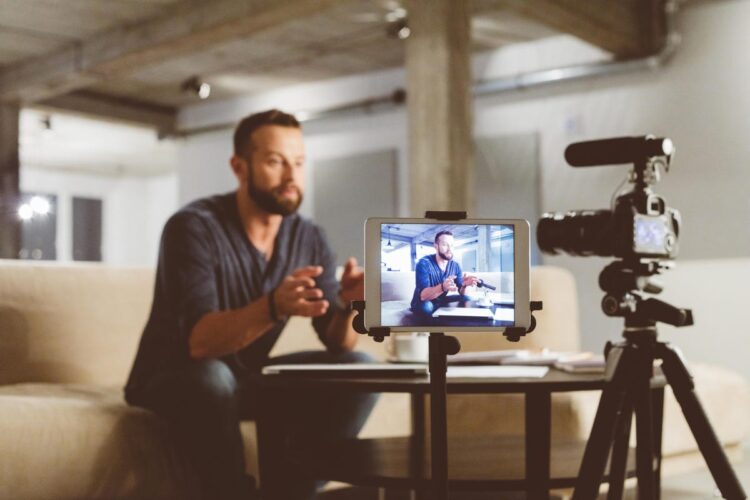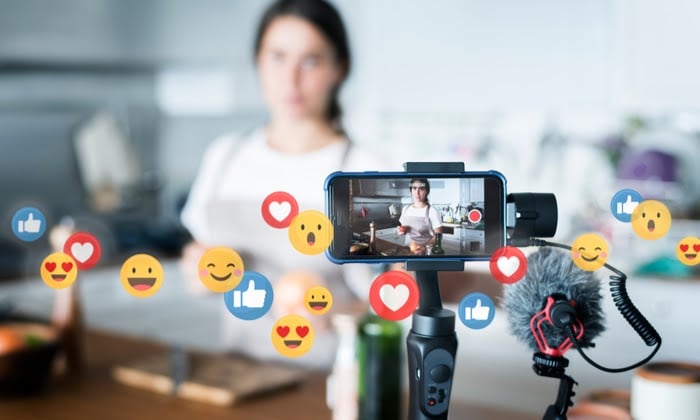Live streaming has become a common occurrence in recent years, with events as diverse as sports games and virtual conferences drawing in viewers from all over the world. The problem is that watching something happen on a screen isn’t always as interesting as attending an event in person. Live streamers must focus on creating an engaging experience for remote audiences to make up for the difference. To avoid attendee drop-off and virtual fatigue.
Page Contents
Basic Challenges Associated With Live Streaming

Source: forbes.com
Producing professional-quality, live-streamed videos can be a serious challenge, especially for those who are new to the field. Unlike traditional video production, there are no do-overs. Everything has to go right the first time. Live streamers who want to take their production value to the next level of professionalism can visit epiphan.com to learn how.
Just having the right equipment and knowing how to use it isn’t enough to create an engaging event streaming experience. Today’s audiences are sophisticated. They want to feel like they are part of the action and expect to get more out of virtual events.
How Video Production Enhances Live Streaming Experiences
Elevating video production levels can enrich live experiences no matter what type of virtual event is being held. Adding pre-recorded videos to explain complex topics in greater detail, inviting remote guests on for interviews or discussions, using graphics, and visualizing data to highlight important information are all examples of adding production value. Having the right tools in place to accomplish these goals and knowing how to use them is essential for getting video production right.
The Move Towards Immersive Virtual Experiences
To accommodate changes in audiences’ levels of sophistication regarding online events, planners are getting creative. Instead of relying exclusively on standard tools, they’re using the same basic framework but adding extra layers of excitement such as viewer connections through chat or other mechanisms.
While traditional live streaming of events tends to create a fear of missing out, immersive experiences do the opposite. They make virtual attendees feel like they are a part of the action.
Tips for Boosting Engagement During Live-Streamed Events

Source: tvunetworks.com
Just knowing what audiences want isn’t enough. Event planners need to find out how to incorporate the information into the basic structure of their live streams. Here are a few tips that can help.
1. Get Everyone Excited
People get excited about real-life events because they anticipate having fun and because skilled event planners know how to generate hype. The same thing can happen in the digital world. Taking out ads, creating event websites, and engaging potential viewers on social media all go a long way toward getting everyone excited for an upcoming digital event. Encourage people to talk about the event online, invite their friends, and generate a buzz. Organizing a contest like a product giveaway or offering prizes like better levels of access for additional invites can help.
2. Create Opportunities for Structured Interaction
Structured interactions during immersive virtual experiences increase audience engagement. This is particularly true for corporate conferences, where networking and catching up with partners or clients are more important to most attendees than the keynote speakers. Structured interactions such as polls, trivia questions, upvotes, and predictions all help to increase engagement among participants. This, in turn, brings the virtual event closer to the experience of attending a conference in person.
3. Use Feedback in Real Time
Many speakers, both in person and online, solicit feedback from their audiences. However, asking for feedback and going back to address questions later isn’t the same thing as doing it in real time. Event planners should acknowledge input from viewers on-screen and encourage speakers to use the feedback in real-time during discussions and presentations. That way, people participating from home will feel like they are still a part of the action.
Examples of using feedback in real-time can include responding to poll results, answering questions, or even showing relevant statistics about user engagement over the screen. Creating a feedback loop between the speaker and the virtual attendees makes viewers feel that they are a necessary part of the interaction.
4. Make It Personal
Every live-streamed event is different, and so is each viewer. Some people attend events to network virtually. Others just want to consume content and don’t care about interacting with their peers. Either way, creating a user journey that accommodates each group of attendees’ goals will help to optimize engagement.
Machine learning can help virtual event organizers personalize experiences. Well-designed algorithms analyze click patterns to gather information about attendees and what they are doing, then make intelligent predictions about their future actions and recommend what to do next to keep people engaged with the content. This extra step may not be worth it for single live-streamed lectures, but it’s a great way to get people to stick around longer at online conferences.
5. Gamify the Experience
Gamification has become a popular strategy for boosting engagement over recent years. This strategy allows event planners to take advantage of natural human behavioral tendencies and make otherwise serious activities seem more fun or engaging. Adding trivia with leaderboards, awarding points for participation, or even adding digital scavenger hunts get people more involved and help to avoid screen fatigue.
Combining Broadcast-Quality Content With Active User Engagement

Source: neilpatel.com
The quality of live-streamed videos is about more than just making a company, lecturer, or content creator look professional. People are more likely to engage with broadcast-quality videos. After all, they’re used to programming on streaming services. Poor-quality video and a lack of professionalism dramatically reduce participation rates no matter how interesting the immersive elements of a live-streamed event are.
Video quality only lays the groundwork for the rest of an event planner’s job. Making the live-streamed event as engaging as possible requires getting people interested and invested and keeping them feeling that way. Add interactive elements, personalize as much of the experience as possible, and create opportunities for structured interactions that can act as a stand-in for in-person hallway chatter at a lecture or round-table discussions.




